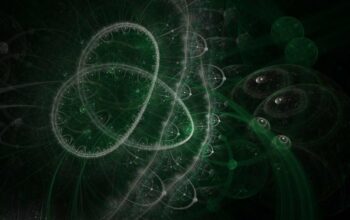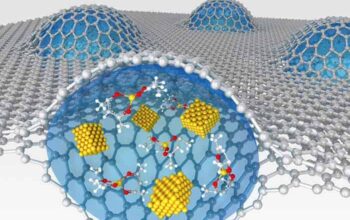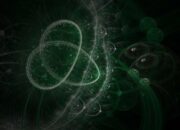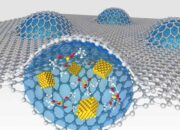Magnets have captivated humanity for centuries, their enigmatic powers tracing back to ancient civilizations. Yet, beneath the surface of the familiar magnetic phenomena lies a trove of quantum mysteries waiting to be unraveled. How do we delineate the macroscopic magnetic behaviors we observe in everyday life from the intricate microscopic interactions governed by quantum mechanics? Can we leverage these subtleties to unlock new technologies that transcend our current understanding?
This inquiry invites an exploration into the realm of quantum magnetism, where the peculiarities of subatomic particles yield magnetic phenomena not observable in classical magnetism. Classical magnets work through the alignment of magnetic domains, giving rise to attractive and repulsive forces evident at human scales. In contrast, quantum magnets operate on principles such as spin, entanglement, and collective excitations; these concepts drastically alter our perception of magnetism, leading to fascinating implications for the future of materials science, electronics, and even quantum computing.
At the core of quantum magnetism lies the concept of spin, a fundamental property of elementary particles. Spin is an intrinsic form of angular momentum that does not correlate with any classical analogue. Notably, electrons possess a spin value of ½, which leads to two possible orientations: ‘up’ or ‘down.’ This binary characteristic plays a crucial role in defining the overall magnetic behavior of a material. In a typical magnet, the spins of numerous electrons align in the same direction, culminating in a net magnetic moment. However, in quantum magnets, the interaction between spins can yield a variety of emergent phenomena due to collective behaviors.
Frustration is one important term in the context of quantum magnetism. It arises when magnetic interactions favor opposing alignments, leading to a system that cannot settle into a simple ordered state. This interplay results in a vast ground state degeneracy and gives rise to exotic magnetic states, such as spin liquids. Unlike traditional magnets that exhibit long-range order, spin liquids are characterized by fluctuating spins even at absolute zero temperatures. These intriguing systems present a playground for physicists to investigate nontrivial topologies and quantum entanglement, paving the way for potential applications in quantum computers.
Another captivating aspect of quantum magnets is the phenomenon of topological order, where the arrangement of magnetic moments can induce exotic excitations called quasiparticles. These quasiparticles exhibit properties akin to those of fundamental particles and are robust against local perturbations. It raises the question: Can we develop materials with inherent topological properties that could be harnessed for fault-tolerant quantum computation? The answer may lie in the emerging field of topological quantum computation, which seeks to exploit the stability of these quasiparticles for more reliable qubits.
Moreover, researchers are also exploring new materials exhibiting quantum magnetic behaviors, such as frustrated magnetism or strong correlations among electrons. Transition metal oxides, for example, have emerged as prime candidates due to their complex interplay of electronic, magnetic, and structural properties. In such systems, strong electron-electron interactions can give rise to behaviors far removed from conventional metallic or insulating states. Researchers have recently begun to investigate the role of disorder in these materials, unveiling that even a minor disorder could lead to significant changes in magnetic responses.
The interplay of magnetism with other physical phenomena also highlights an intricate web of interactions worthy of deeper investigation. The coupling of magnetism and superconductivity, for instance, poses a challenge for physicists. Indeed, unearthing the conditions under which magnetic order can coexist with superconductivity — a state characterized by the absence of electrical resistance — remains an essential pursuit. This pursuit is not just academic; the convergence of these states could yield revolutionary developments in energy transmission and quantum technologies.
Furthermore, advances in experimental techniques have spurred new discoveries in quantum magnetism. For instance, neutron scattering and nuclear magnetic resonance (NMR) have allowed the exploration of magnetic correlations at unprecedented resolutions. Such techniques enable researchers to probe the intricate arrangements of spins and ascertain their quantum entanglement properties. This level of detail is foundational for understanding complex correlated materials where standard theories of magnetism might fail.
As this field continues to evolve, it beckons ideas beyond the standard paradigms of physics. Can we harness quantum magnetic phenomena to create new storage devices, or is it feasible to combine quantum magnetism with machine learning to develop smarter materials? The future appears rife with potential challenges and opportunities. The marriage of theoretical constructs, experimental endeavors, and technological aspirations sits at the forefront of quantum magnetism research.
Ultimately, unraveling the mysteries of quantum magnetism requires an interdisciplinary approach, blending physics, materials science, and computational modeling. As researchers navigate this intricate landscape, the engaging question arises: how will our ongoing explorations of quantum magnets reshape our understanding of the universe? With each step forward, we not only grasp the underpinnings of magnetic phenomena but also inch closer to realizing transformative technologies that may redefine modern civilization.






